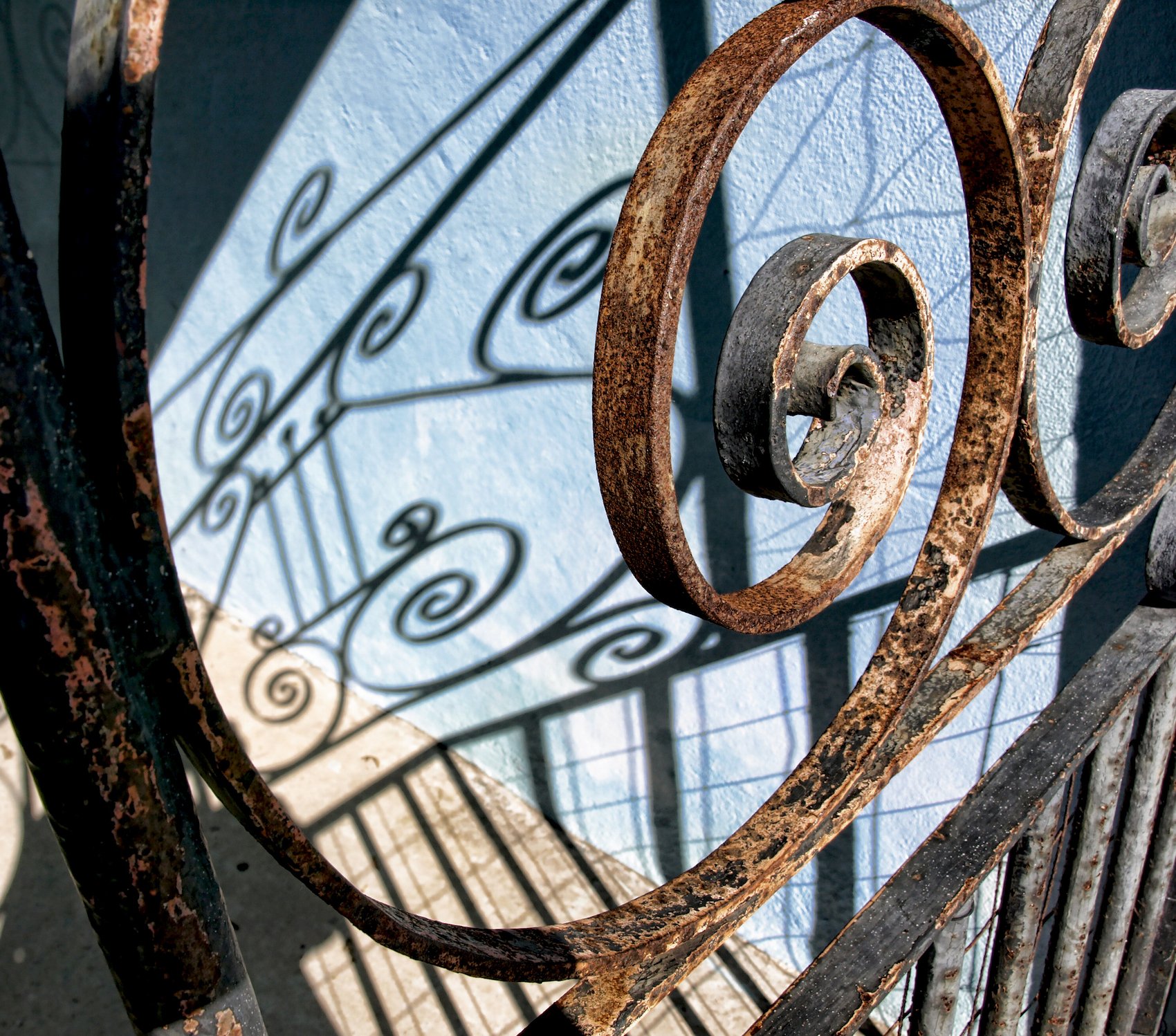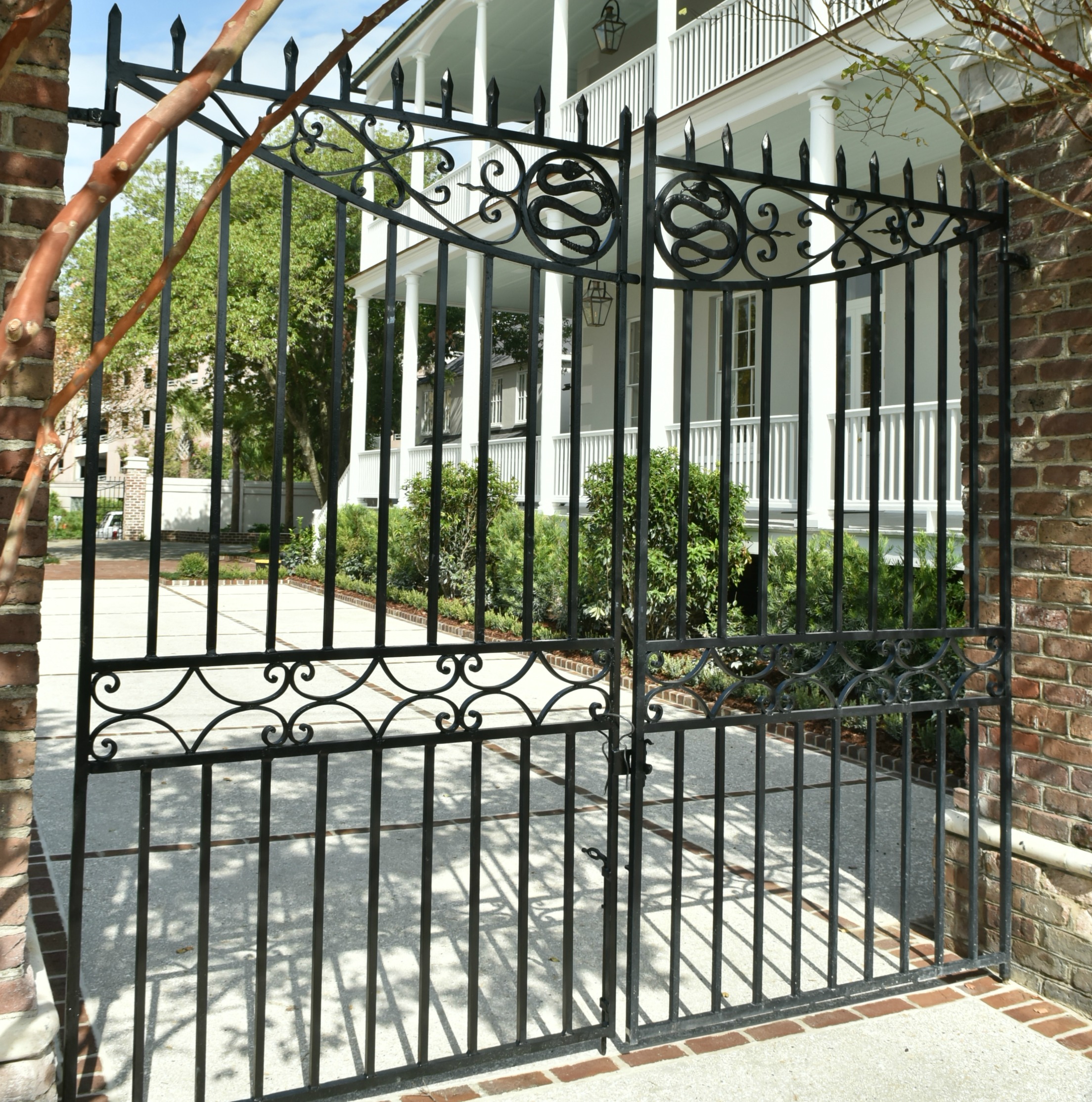
June 9 marks the birthday of legendary blacksmith Philip Simmons.
It can be argued no other artist left such an indelible and prolific mark on the city as Simmons. His ironwork is truly art. The beauty of handmade ironwork is in the details. However, in this age of technology and machines, craftsmanship seemingly has been left by the wayside. Pieces made by hand, like those that Simmons created, have been abandoned in favor of machine-fabricated work.
Here are three important differences between forged vs. fabricated pieces
1. Scrollwork: Elements can’t be quite as finely finished when done by machine. When done by hand, scrolls are more, well, “scrolly. ”
2. Details: Can’t be quite as delicate if done with a machine. Machines have difficulty in tight spaces. When done by hand, details are possible that are more particular.
3. Joinery: There are three types of traditional joinery—rivets, collars, and forge welds. These are not noticeable at first glance, but they make a considerable difference in the quality of a piece
Charleston is known for its forgers. Pick up a copy of “Keeper of the Gate” at the Preservation Society. The book contains a list of all of Simmons’ work that can be found throughout the best neighborhoods in Charleston, South Carolina. The contributions that Philip Simmons made are plentiful around the Charleston landscape, most notably some of his iron gates with names such as “The Snake Gates, ” “The Sword Gate, ” and “Lyre Gates. ” You can explore much of Simmons’ celebrated ironwork through the work of The Philip Simmons Foundation Inc.
Our premiere event venue,The Gadsden House, is the site of Simmons famed “Snake Gates, ” designed to reflect the legacy of the home’s original owner, American general and statesman Christopher Gadsden (1724–1805), who is said to have designed the “don’t tread on me ” flag in 1775 during the American Revolution. It was used by the Continental Marines as an early motto flag.
We had these iconic gates meticulously restored in 2015 by Frank Verga, a graduate of the American College of The Building Arts, when the Gadsden House underwent a complete renovation. Read the full story here.

Some of the finest examples of Philip Simmons incredible ironwork can’t be found in a museum. They are in fact, on display for anyone to see. Simply have a stroll through Charleston’s South of Broad or Ansonborough neighborhoods. Philip Simmons ironwork adorns both grand mansions and more modest homes all around Charleston. Along the way, you’ll discover gardens and courtyards, hidden cobblestone alleys, and perfectly preserved examples of Charleston rich architectural history.
To learn more about Philip Simmons and his lasting impact on Charleston, visit http://www.philipsimmons.us/
Interested in Learning More?
Our expert teams - from development, investment, real estate, and property management - have experienced it all and have the insight to help you along the way.
Find Out More